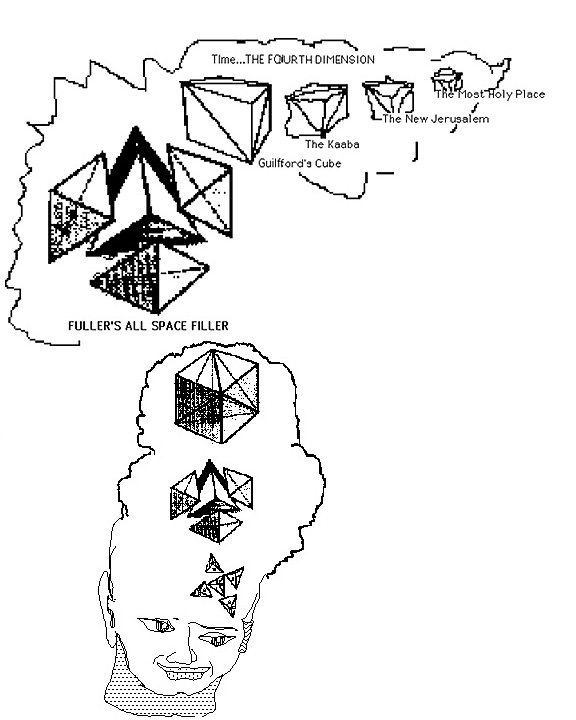|
Dr. Guilford, researcher in Human Psychology, developed a sophisticated and rather complex relationship between the various
psychic entities of human intelligence and the dimensions of thinking by using, exactly, a model that was graphically represented
by a 3-D cube.
(Graphics are link to next page)
| Ancient hypothesis for this modern day theory... |

|
| The image of the universe "out there," is visualized in a 3-D pattern of thoughts. |
The philosophy of Phenomenalism argues that an internal modelling is the root source to our thinking. We are separated hopeless
from the real world except for what we make of it ourselves from data flowing in from these few sensory data input "tools."
The idea seems correct: From five (5) sensory inputs, the process of thinking creates abstractions, immaterial mental
images. All together, we call this, mind. But, what we deduce from these senses is confirmed only by the agreement between
them. We taste what we smell and are convinced. We feel what we see and are certain. This fundamental Empiricism is the
best available to us, but nevertheless, we need admit, we are victim of our own assumptions.
Nevertheless, it seems to be working very well, upon subjective examination.
The idea of a veil between us and the world lends itself to further reflection here concerning the nature of that veil.
The veil, itself, is made analogous to the Operating System of the computer. It is seen, here, as if it represents a fixed
software program, one used by the thinking processes to confirm among the variables of mind what is to be made of the inputs.
|

